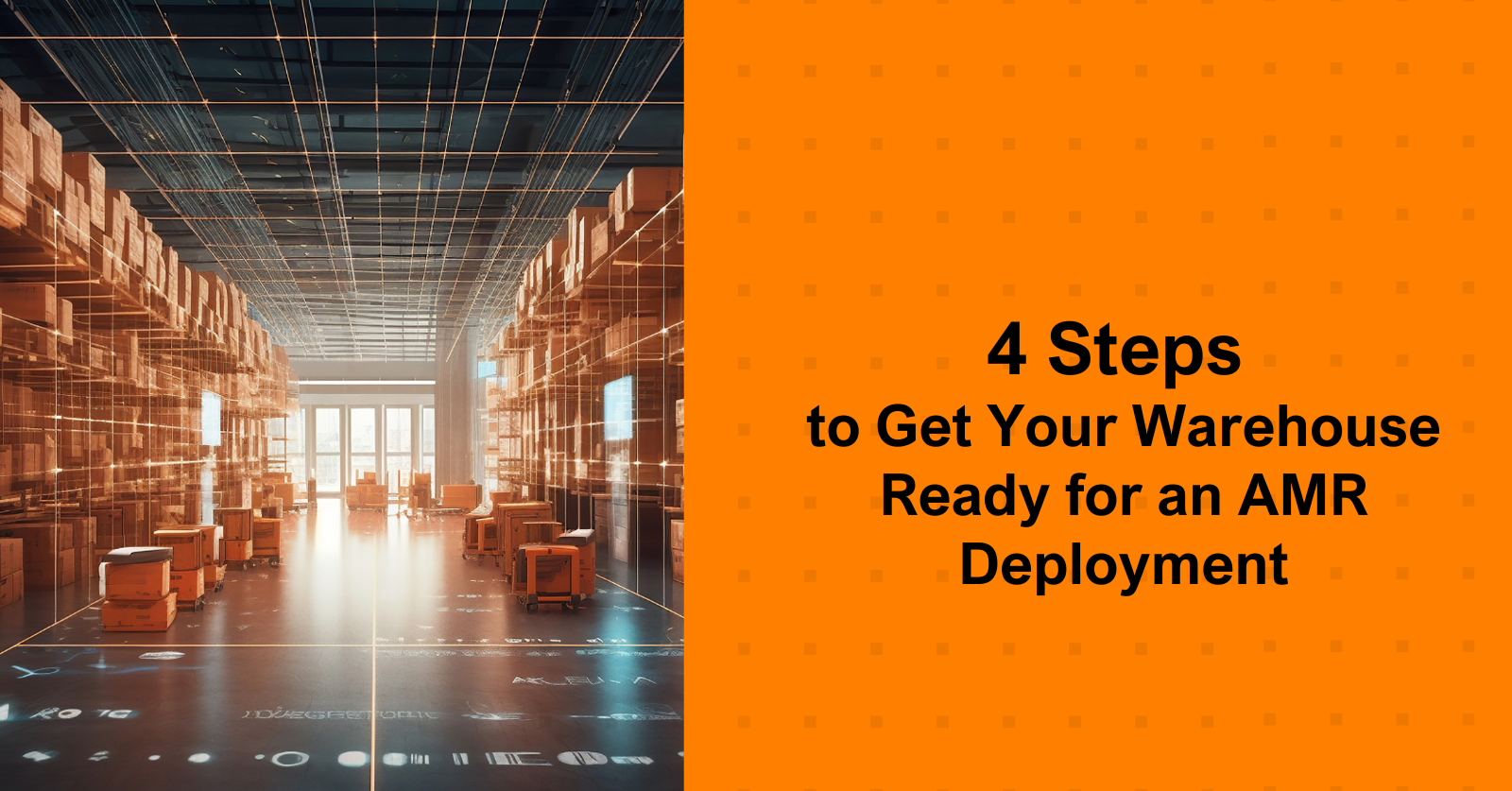It’s no secret that warehouse automation is at the forefront of revolutionizing the retail and ecommerce industries, with the global market expected to reach $41 billion by 2027.
While the decision to embrace robotic automation may be an easy one, the implementation process isn’t always quite so simple. To help guide you through the complexities of adopting automation, this blog post explores the four key elements of site preparedness, offering tips and best practices to optimize your facility and maximize the benefits of warehouse robotics.
1. Establish the optimal working environment
To optimize Autonomous Mobile Robot (AMR) performance, it’s essential to have a thorough understanding of your working environment.
- Enclosed Indoor Facility: Utilize an indoor space for AMRs to operate efficiently.
- Ambient Temperature: Maintain a temperature range between 32-113°F (0-45°C) for optimal functioning.
- Humidity Levels: Keep humidity between 5-95% RH to ensure a conducive environment.
- Clean Air: Ensure the air is free from dust, flammables, explosives and corrosive gases.
- Flooring Materials: Use flooring materials that minimize electrostatic discharge.
- Altitude: Operate within an altitude range of -60 to 3,000 meters.
- Ambient Lighting: Enable ambient lighting while avoiding direct sunlight.
- Lighting Specifications: Use halogen/mercury lights below 10,000 lux and fluorescent lamps below 6,000 lux.
2. Choose the right foundation
The facility floor is a critical factor in the successful deployment of AMRs.
- Surface: Ensure the facility floor is flat, even and smooth for seamless robot navigation.
- Environment: Create an obstacle-free environment on the facility floor.
- Regularity: Periodically assess and enhance surface regularity for optimal robot operation.
- Joint Protection: Fill all saw cuts for joint protection.
- Joint Filling: Fill joints within 12 months with specified Shore A hardness.
- Resealing: Reseal joints only if signs of deterioration are observed within 6 months of construction.
RELATED READ: A Guide to Fulfillment Automation SLAs: What KPIs to Include and How to Ensure Adherence
3. Get the electrical infrastructure in order
A robust electrical infrastructure is fundamental for efficient AMR functioning.
- Power Supply Specifications: Ensure the correct power supply specifications based on single or three-phase systems.
- Distribution Channel: Set up a distribution channel with an uninterruptible power supply (UPS) for single-phase systems and a central distribution panel for three-phase systems.
- Raw Power Path: Define the raw power path, either through UPS or directly to a miniature circuit breaker (MCB).
- Power Sockets: Strategically place power sockets near pick-put stations and bot chargers.
- UPS and Power Supply: Understand the importance of UPS for preventing operational malfunctions during power outages. Facilitate drop points for UPS and raw power supply.
4. Consider the ‘IT’ factor: network infrastructure
Network infrastructure is a critical component in ensuring seamless AMR communication and operation.
- LAN Wiring: Use Cat 6 UTP wires with RJ45 plugs for reliable and fast communication.
- Internet Access: Establish internet access for system monitoring, off-site server access, troubleshooting and code deployments.
- Secure Shell (SSH) Protocols: Implement secure remote login protocols for maintenance and updates.
- Layout: Maintain a gap between power and network cables to prevent electrical noise interference.
- Wi-Fi Network: Optimize Wi-Fi channels for better coverage and minimize interference strategically.
While preparing your warehouse for robotic automation is a multifaceted endeavor, it’s one that promises substantial rewards in efficiency and productivity. By focusing on optimizing your working environment, ensuring a solid foundation, getting your electrical infrastructure in order and establishing a robust network infrastructure, you lay the groundwork for successful integration of warehouse robotics. Embracing these key elements not only enhances the performance of AMRs but also sets the stage for streamlined, future-proof operations. So, is your warehouse robot ready? If you’re still not sure, check out our ebook for a more detailed look into pre-deployment site preparedness.


